Only for the wicked 💀- TCB- Crime analyst/ Analista de Crimenes y Misterios. TCC community/ trigger warning🦴☠️
Don't wanna be here? Send us removal request.
Text
The Setagaya family murder
On the night of December 30 to 31, in the early 2000. The Miyazawa family was found dead in their own home. But, this was no ordinary homicide, the killer left behind an unusual amount of evidence. Despite thousands of clues and a huge investigation, the case remained unsolved.

Background
Yasuko (41) worked as a tutor, and Mikio Miyazawa (44) was employed at a marketing firm Interbrand. Niina (8) and Rei (6), their two kids, were bright and lively. The family lived in a peaceful rural neighborhood that was about to be renovated for a new park. Everything was going fine, everyone was busy in the new year's celebration. No one knew that they would be victims of a horrible crime that would shock Japan.
The Murder
On the morning of December 31, 2000, Yasuko Miyazawa’s mother, Haruko, went to her daughter's place since she wasn't picking her phone, stumbled upon a horrifying discovery—Mikio, Yasuko, and Niina had been stabbed to death while Rei had been strangled.
Investigators determined that the killer likely entered the house sometime between 11:30 p.m. and midnight the night before, most likely through the bathroom window on the second floor.
Although there were many speculations of how the actual murder occurred, Detectives think the scene's first victim was Rei, who was strangled in his sleep with the killer's bare hands. After hearing disturbance on the second floor, Mikio rushed upstairs to check whats going on Probably even fighting the killer until he was brutally stabbed in the head with a sashimi knife. Both Yasuko and her daughter Niina met an equally horrific end--both were repeatedly stabbed, with the killer even using a second knife from the family's kitchen after the first one broke inside Mikio's skull. Niina was then beaten to death by the murderer.
However, their deaths were not the end of the horror. The murderer remained in the house for hours, which is shocking. The killer used the family computer. Consumed four bottles of barley tea, a melon, and four ice creams from their refrigerator, using their bathroom and leaving his feces in the toilet without flushing, treating his injuries using first aid kits and other sanitary products. Drawers and papers were ransacked (with some being dumped in the bath and toilet) and some money was taken(specifically Yasuko's tuition money), although more was left behind. The killer also left numerous items behind in the living area (knife, scarf, hip bag, shirt, jacket, hat, gloves, and two handkerchiefs).Several reports have also said he took a nap on the sofa in the second-floor living room.

An analysis of Mikio Miyazawa's computer revealed that it had connected to the internet the morning after the murders from 1:18 a.m. to 1:23 a.m. for five minutes, visiting his company’s website, the Shiki Theater, university lab pages, and the Science and Technology Agency. The mix of sites raised suspicions, especially since the stolen money came from Yasuko’s collected tuition fees, suggesting a possible connection to her tutoring.
Stay tuned for Part 2, where we dive into the extensive investigation, the bizarre evidence left behind, and the shocking theories surrounding the case.
#setagaya#japan#mystery#homicide#true crime#crime#murder#true crime community#crimen#setagaya family murder
7 notes
·
View notes
Text
The Black Dahlia- The gruesome murder of the upcoming actress
The brutal 1947 murder of Elizabeth Short, known as the Black Dahlia, remains one of the most infamous cold cases in American history.
Found mutilated and bisected in Los Angeles, her murder sparked decades of speculation, wild theories, and deep fascination.
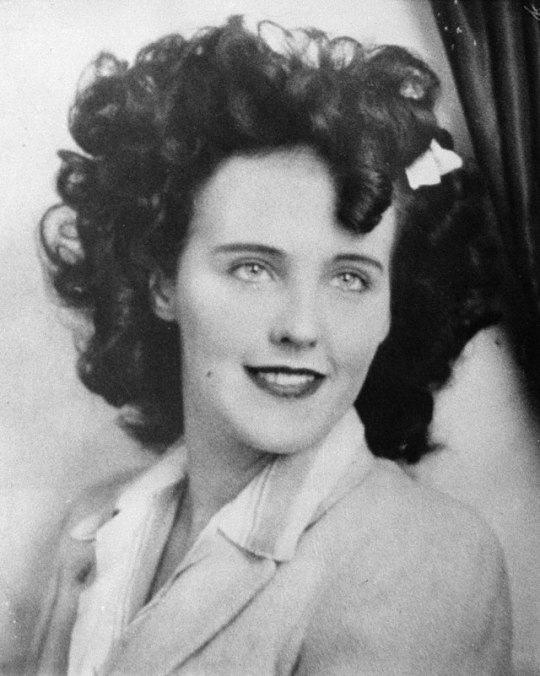
Background
Elizabeth Short was born on July 29, 1924, in Boston, Massachusetts. After her father faked his death in 1930, her mother raised five daughters alone. Troubled by lung issues, Elizabeth spent winters in Florida before dropping out of high school. Elizabeth was about to be an aspiring actress at the young age of 22 when she moved to Los Angeles in hopes of making a name for herself. She was last seen alive on January 9, 1947. Just days later, her body was discovered under horrific circumstances.
The Murder
On the morning of January 15, a woman walking with he child in a vacant sidewalk near Leimert Park found Short’s body. At first she thought that the body was a naked mannequin, after a closer inspection, she was horrified to find out it was a dead body .Short had been sliced at the waist with surgical precision, her face cut into a chilling smile, and she was completely drained of blood. The body had been carefully posed, adding to the eerie nature of the crime.
Despite the gruesome scene, no signs of struggle or defensive wounds were found, suggesting she was killed elsewhere and then transported to the lot.
The Investigation
Short’s murder sparked a media chaos, with newspapers naming her “The Black Dahlia.” The case drew hundreds of leads, but the investigation quickly became chaotic. The Los Angeles Police Department was flooded by false confessions—more than 60 people claimed responsibility, but none were credible.
Possible suspects
There was no single confirmed killer, but over 150 suspects were considered. The most suspecting ? Dr. George Hodel, a wealthy physician with connections to the LA elite. His own son, a former LAPD detective, later claimed to have evidence linking him to the crime.
The Evidence
• Elizabeth Short’s body was sliced at the waist with surgical precision.
• Her face was slashed from ear to ear in a disgustingly creepy smile.
• Her body was completely drained of blood, suggesting she was killed elsewhere.
• Her body was placed and posed in a terrifying manner, hinting at a twisted message from the killer.
Theories Behind the Murder
1. The Surgeon Killer – Many believe the precision of the cuts points towards a doctor, possibly Hodel.
2. A Crime of Passion – Some critics argue she was killed by a jealous lover or rejected proposal.
3. The Mob Connection – The crime’s brutality led some to link it to organized crime figures. Because of the violence of the crime in that period of time, some people have connected it to members of organized crime.
4. A Serial Killer’s First Victim? – Some theorists connect her murder to others homicides in LA at the time.
Why Wasn't the Case Solved?
Despite police efforts, the case went cold. The media coverage caused harm to the investigation. There was also corruption in LAPD which might've played a role in the case. Later, the Files were lost, leads vanished, and evidence was weak. It’s now a haunting mystery of Hollywood’s dark past, forever unsolved.
My thoughts on the case
Elizabeth Short’s murder remains one of the most haunting unsolved cases in history. She was a young woman with dreams of a better future, but her life was taken in a brutal and unimaginable way. The details of her death are horrific, but what’s even more tragic is that justice was never served.
Despite countless theories and suspects, her killer was never caught. The mystery lingers, leaving behind unanswered questions and a sense of injustice that remains to this day.
If you want to learn more about Elizabeth Short’s life, the investigation, and the theories surrounding her murder, check out the FBI’s official case files on their website.(added below) You can also listen to in-depth discussions on the case in true crime podcasts like "Solved murders: true crime story's "podcast, and other podcasts which explores the Hodel family’s dark past and its possible connection to the crime, available on Spotify.
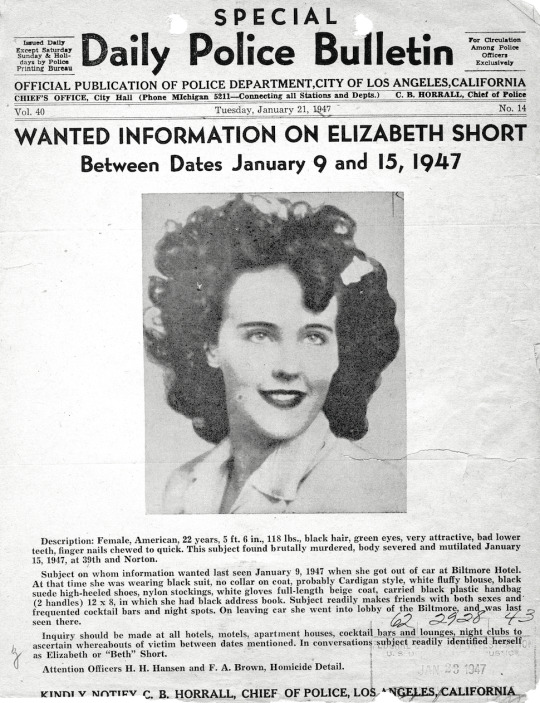
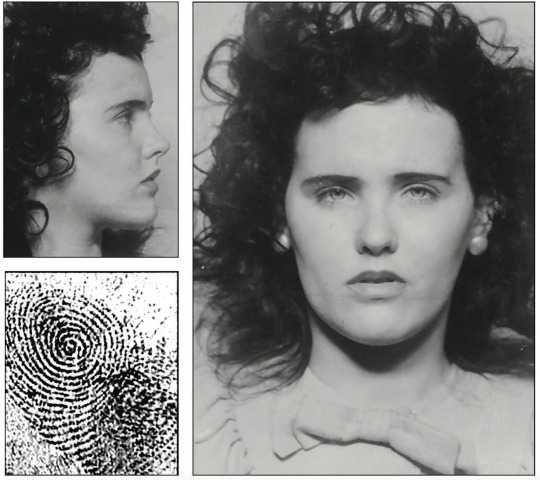
Elizabeth Short mug shots and fingerprint from when she was arrested by the Santa Barbara police for underage drinking. The Bureau also had her “mug shot” in its files and provided it to the press.
So what do you think happened to the 22-year old Hollywood upcoming sensation? Was Elizabeth Short the victim of a jealous lover, a serial killer, or someone with surgical knowledge? Why has no one been caught, and why was her body presented so intentionally?
With so many suspects and lost evidence, will we ever uncover the truth, or will this case remain one of Hollywood’s darkest unsolved mysteries?
That's a wrap for today's case! See you in the next post.
-Anisha :)
#cold cases#investigation#police investigation#mystry#the black dahlia#murder case#Elizabeth short#George hodel
17 notes
·
View notes
Text
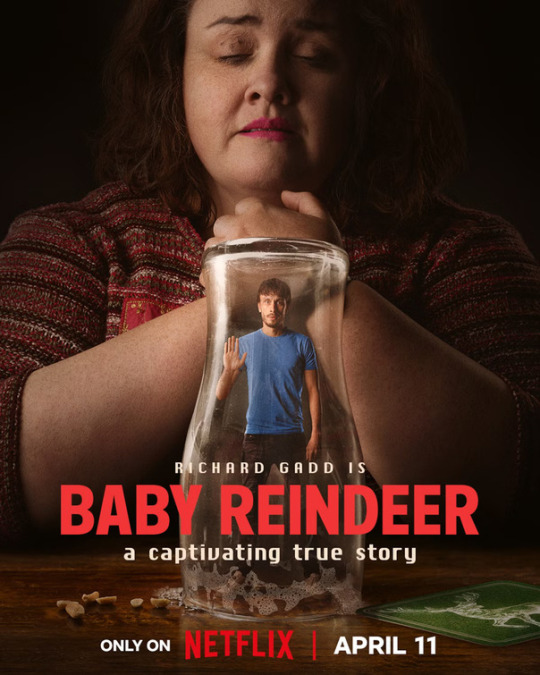
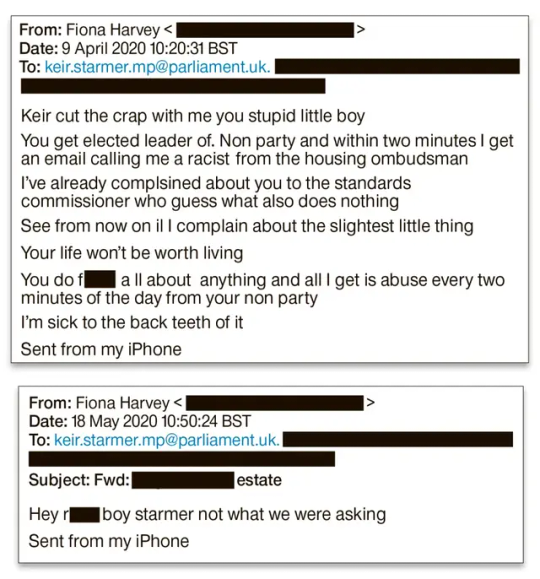
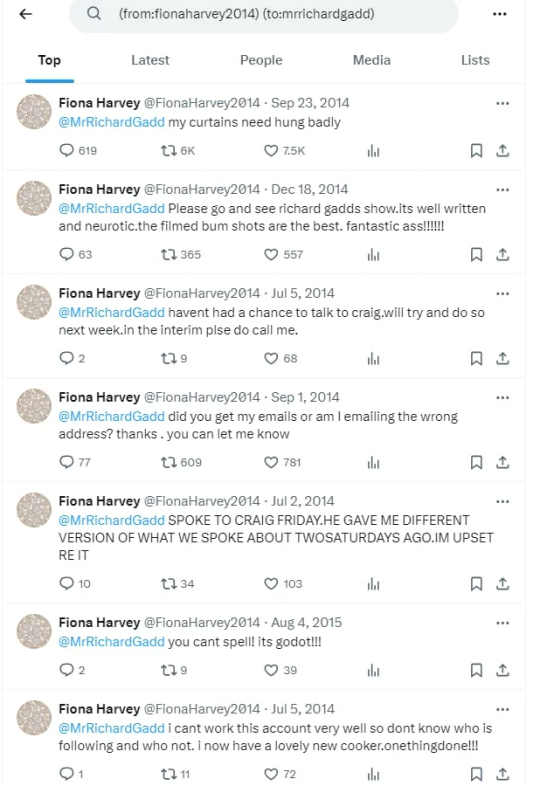
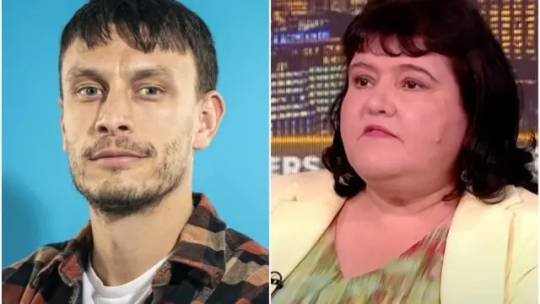
The Baby Reindeer is a 7 episode Netflix series which involves comedian and actor Richard Gadd. The mini series is based on Gadd's real-life experiences of being stalked, harassed and abused by a woman named Martha, which later was confirmed to actually be named Fiona Harvey (the stalkers real name). An ordeal that lasted years and profoundly affected his personal life. The Netflix series which turned to be a hit recounts how Martha initially appeared as a kind and vulnerable figure but showed her real face as an obsessed and deranged individual.
The encounter began when Gadd was working at a bar in London. Martha, a middle-aged woman, seemed like a regular customer that was going through life struggles when Gadd offered compassion that marked the start of a relationship that spiraled into harassment.
The stalking began with inundating Gadd with emails, letters, and social media messages that ranged from affectionate declarations to threatening and hostile. Her behavior included persistent and intense messaging. While stalking Gadd, she often expressed obsessive thoughts, accusations, and threats, leaving him to feel unsafe and in distress. Gadd documented these experiences on his stage show which included verbatim readings of Martha's emails as evidence of her behavior. While going through this event, Gadd expressed feelings of guilt for initially engaging with Martha, his struggle to establish boundaries, and the mental health consequences of living in constant fear. Even with police intervention, stalking cases can be challenging to resolve legally. The play reflects his frustrations with the legal system’s limitations in addressing such situations effectively.
Richard Gadd was able to provide full evidence that can be sought throught the series which raises awareness about stalking and its impact on victims, encouraging discussions about mental health, and legal reforms.
In May of 2024, Fiona Harvey, who claims to be the real-life inspiration for the character "Martha" in Richard Gadd's Baby Reindeer, appeared on Piers Morgan Uncensored to share her perspective. She denied all claims against her andrefuted sendimg him emails which were 41,000 emails, over 4,000 hours of voicenotes and constant stalking and following him home. Harvey described Baby Reindeer as an "obscene work of fiction" and labeled Gadd as a "psychotic" and a "liar". Harvey claims the series falsely suggests she was convicted of stalking and sexual assault, causing significant harm to her reputation.
"Harvey is seeking $50m for actual damages, $50m in compensatory damages for “mental anguish, loss of enjoyment and loss of business”, $50m for “all profits from ‘Baby Reindeer’” and $20m for punitive damages."
Richard Gadd has defended his version and Netflix has also stand with him and the series.
In 1997, Harvey briefly worked for lawyer Laura Wray, widow of Scottish politician Jimmy Wray. After her dismissal, Harvey began to stalker the lawyers family. Fiona Harvey herself is a lawyer.
#Richard Gadd#Martha#baby reindeer#netflix#british case#brit case#stalking case#true crime#tcc#crimen#truecrime#fiona harvey#uploads#tcc tumblr#netflix drama#netflix thriller#netflix case
3 notes
·
View notes
Video
youtube
MOMENTO EXACTO DE LA REPLICA DEL TERREMOTO Armenia 1.999 Quindio
#armenia#armenia Colombia#armenia quindio#quindio#colombia 🇨🇴#Colombian case#natural disasters#terremoto#Armenian earthquake
3 notes
·
View notes
Text
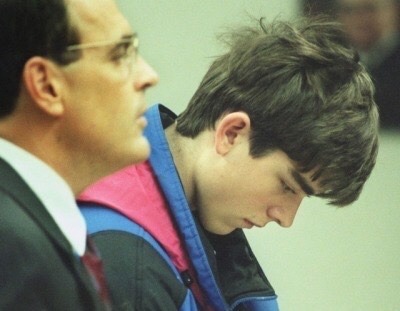
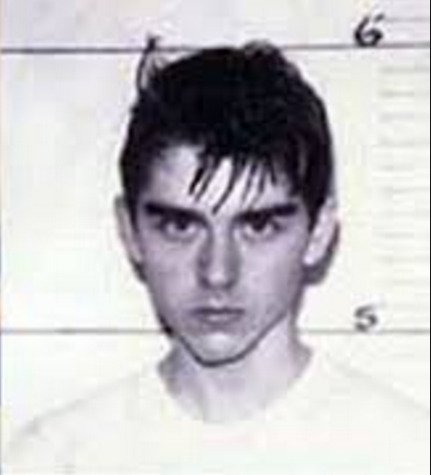
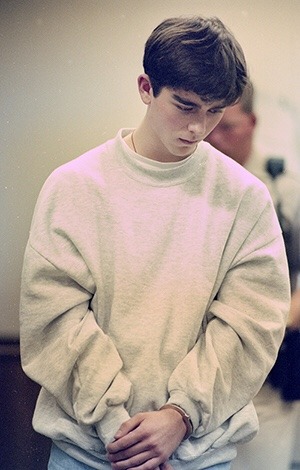
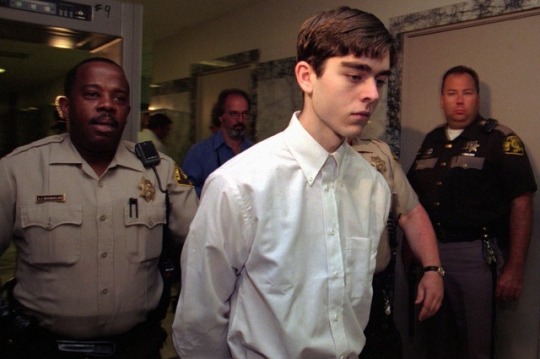
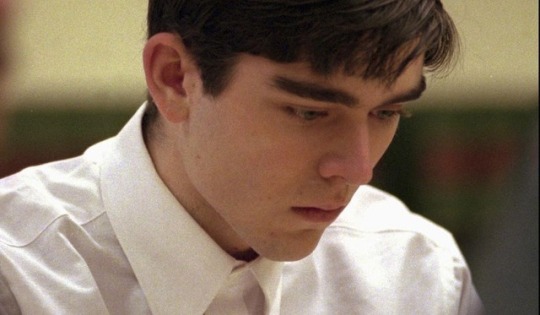

Barry Loukaitis (14) perpetrated the 1996 Frontier Middle School shooting on February 2nd in Moses Lake, Washington. Loukaitis arrived to school in an all black wild west outfit, killing his algebra teacher and two students, while seriously injuring another student and held his classmates hostage before he was subdued by a gym coach. During the shooting, Loukaitis quoted from the Stephen King novel “Rage”, citing “This sure beats the hell out of algebra, doesn’t it?” The motives for the killing range from mental illness to his dysfunctional family. Loukaitis’s mother, Jo Ann Phillips, frequently spoke of a double suicide plan on Valentine’s Day 1996 with Barry in order to seek revenge on Barry’s father for having an affair. Loukaitis suffered with dysthymic disorder, was taking Ritalin at the time to treat hyperactivity, and was believed to suffer from clinical depression. In June 1996, Loukaitis was tried as an adult when he was 15 years old. On September 24, 1997, he was convicted of two counts of first-degree murder, one count of second-degree murder, one count of first-degree attempted murder, and 16 counts of aggravated kidnapping. He was sentenced to serve two life sentences and 205 years without the possibility of parole. In 2017, Loukaitis was re-sentenced to 189 years in prison. He is currently serving his sentence at the Clallam Bay Corrections Center in Washington State.
#barry dale loukaitis#barry loukaitis#frontier middle school shooting#true crime#school shooting#1996#murder#true crime community
184 notes
·
View notes
Text

Newspaper about Samantha.
597 notes
·
View notes
Text
What is Pain? : How Austin Eubanks Dealt with Addiction and the Aftermath of Columbine.
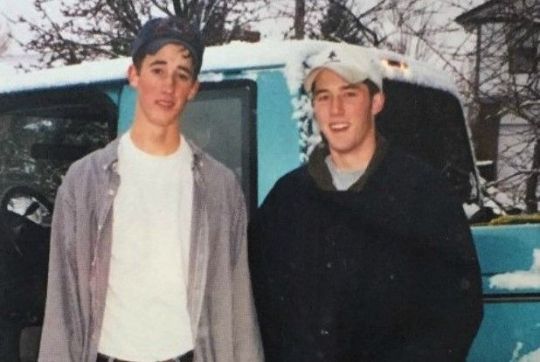
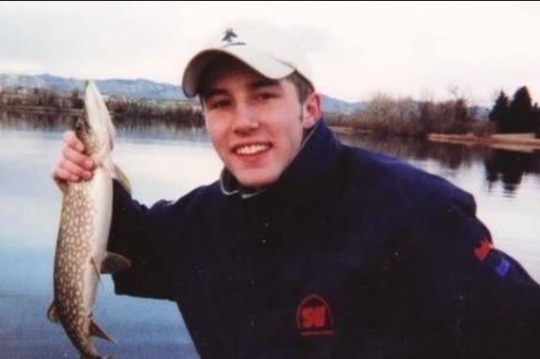
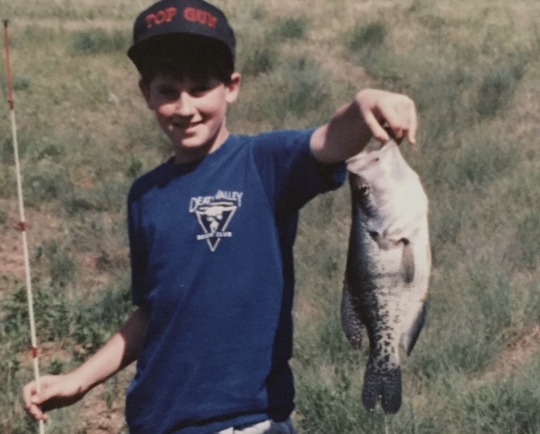
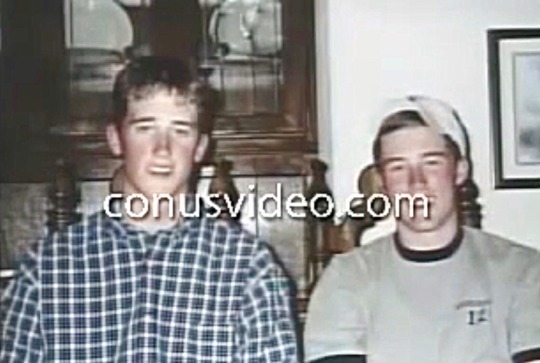
Austin and Corey
Stephen Austin Eubanks was a junior and a star student in Columbine High School. Corey Tyler DePooter, his best friend, was also a particularly gifted student who prioritized his studies over anything else. Despite having a wide range of interests, the two kids particularly bonded over their shared passion for fishing.
At the age of 17, Corey had gotten a job doing maintenance at a golf club in order to earn money for a fishing boat that he planned to buy with a friend — likely Austin. The two often used to go fishing together and would talk about the struggles they had as teenagers.

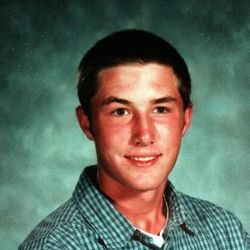
Day of the Tragedy
On April 20th of 1999, the two were inside the library getting ready to get lunch with their friends, Jennifer Doyle and Peter Ball. That was until they had heard shots fired from the outside, not recognizing the sounds and believing that it was only the sounds of construction. Then they heard a bomb go off, a teacher rushing in to scream for the students to hide underneath the table because two students were armed with guns.
In a state of shock and fear, the four duck under the same table near the windows. With 10 minutes passing, the shooters had already entered the library and methodically fired under each table as recalled by him. His best friend, Corey, was one of those who were shot after being aimed with a semi-automatic rifle and shot at the neck, chest, and left arm by Dylan Klebold.
The bullet that hit Austin's hand first passed through his best friend, killing him instantly. With his best friend lying lifelessly beside him and being wounded on his hand and knee, Austin had no other choice than to try to play dead while laying in a pool of blood. When the shooting had stopped, Austin ran through the smoke and out of the backdoor of the library. He was only 17 when the shooting occured.
In Austin's TedTalk “What Columbine Shooting taught me about pain and addiction”, he recalls:
"I remember how I felt: I was confused, I was afraid, I felt sick and I was vulnerable. And just minutes later, I was playing dead underneath a table next to a pool of blood. I had just been shot and I witnessed my best friend murdered right in front of me as we were huddled together waiting for help to come."
Pain, Grief, and Narcotics
During the time he fled from the crime scene, Austin marked that as one of the most impacting and damaging experiences he has ever experienced in regards to the feeling of pain. His definition of pain was nothing similar to what he describes in his present days.
Pain, in a medical sense, is the variably unpleasant sensation of physiological systems mediated by specific nerve fibers of the brain that are conscious of receiving signals of awareness. According to Austin's TedTalk, the American Pain Society introduced the term "pain is the fifth vital sign" in 1996. This means that when you enter the room, your status is assessed using five different data points: blood pressure, pulse rate, temperature, respiration rate, and pain.
Due to a movement that was certain that we were undertreating pain, patient satisfaction surveys were implemented in order to monitor the campaign's success. To him, in order to uphold this new momentum and cause the patient's pain levels to cease completely, the ethical dilemma instantly arose:
“Do I issue this person with narcotics to make them happy or deny them and potentially hurt my compensation, the revenue of the hospital? Or at worse, open myself up for a grievance for undertreating pain that could potentially result in the loss of my job?”
Austin says that the healthcare system predominantly treats physiological systems and would rather not assess emotional pain into the equation. He akins the emotional pain of dealing with trauma being identical or if not more than when dealing with physical pain. With that, within months after the incident, Austin was prescribed opiate medication for his injuries.
In an exclusive interview with The Fix, he said that his injuries were not to the point of needing an opiate pain medication but was immediately given a 30-day supply and became addicted within three months. From then on, he said, “I used substances every day, day in and day out.”
After the shooting, his parents took him to a therapist who said Austin was too shut down to process his horrific trauma. But the reason no one could reach him was because he was overmedicated. He was addicted to painkillers, and used medication because of his unwillingness to engage in the stages of grief that he dreaded to face. He was haunted by the past. Struggling with survivor's guilt and the death of his best friend, he would rather ignore the intense burdening feelings he bore. According to him,
“Acute Physical Pain ends relatively quickly, complex emotional pain does not.”
The morphine Eubanks received at the hospital that day proved to be the opening dose of a costly addiction to prescription painkillers - one that revolved around commonly prescribed drug Oxycontin, he said.
“I learned to manipulate doctors … I could literally get whatever I wanted. Telling them I’d been shot at Columbine and lost my best friend was like [getting] an open prescription book from any doctor.”
He could not process the grief, moreso, he didn't want to. He didn't want to be haunted by the memories that scarred him. In his own words, he would describe the physical ailments he felt to be a 4 or 5, but the emotional turmoil was a 10.
Austin never set foot back to Columbine. His parents hired a tutor and he then went on to graduate in 2000. He attended the Columbine ceremonies but never went back inside the school. He then went into advertising and married in his early 20s. Around this time his substance abuse escalated, and his first attempt to get sober was in 2006. He went into a 30-day inpatient program but failed within hours of leaving, for relapsing using pain pills and Adderall.
Addiction and Sobriety
He failed both outpatient and rehab twice and it wasn't until 10 years later, in 2009 that he was able to overcome this addiction. Right before Columbine, young Austin had been misdiagnosed with ADD.
“I didn’t have ADD,” said Eubanks. “I just liked being outdoors and playing golf better than being in school. At that time, if anybody was truant at school they said, ‘Oh, they must be ADD. Let’s put them on a stimulant.’ That was why I got Adderall. I liked it because I could abuse opiate pain medication to the level that most people would be nodding out. With Adderall, I could function. Basically, I was doing oral speedballs. It was like using methamphetamine and heroin.”
His second try at being sober was in 2008. Gaining the motivation to change after recently separating from his wife, he went to treatment, stayed 90 days, and achieved eight months of sobriety. Then, he akinned addiction to a causal sequence, a domino effect. According to him, he achieved abstinence for a period of time, built up enough false confidence to where he thought he could drink, because alcohol was never a problem. From alcohol, he went to weed, then Xanax, then Oxycontin, and then back into the same routine.
In 2011, approaching the age of 30 and estranged from his wife and kids, he hit rock bottom: "My sobriety date is April 2, 2011. I woke up in a jail cell and had no clue how I got there." His downward spiral began with Oxycontin and alcohol abuse, leading to arrests for various offenses like car theft and fraud. Realizing that he needed a drastic change, he recounted that his lowest moment was waking up in withdrawal, hungover, and facing the ruins of his marriage and being estranged from his children. He knew he had to stop or he would die. After unsuccessful attempts at sobriety, he finally sought help, surrendered to treatment, and was now willing to follow any guidance to rebuild his life.
His journey to lasting sobriety didn't hinge on traditional 12-step programs, but rather on understanding behavioral triggers and brain function through a therapeutic community approach. He was five years sober and started working at The Foundry in Colorado, becoming the COO and handling approaches that combined neuroscience with 12-step principles, recognizing that each person's path to recovery is unique. Using comprehensive approaches aiming to rebuild the lives of those in recovery.
During this time, he would also indulge in old activities in remembrance of his bestfriend.
“It’s something I do to connect with Corey. It's always nice whenever I catch a fish that's above the normal or something special about it. I always tend to look up and give a nod to him. And I know he’s still looking out for me."
Sadly, despite his long battle against drug addiction, in 2019, Austin had passed away in his home in Colorado after an accidental heroin overdose. Just a month after the 20th anniversary of Columbine, Austin was 37 at the time.
What is Pain?
Pain, to Austin, encompassed many things: the confusion and vulnerability of not knowing what to do in such a time of terror, the physical wounds that the doctors tried to medicate to bring the pain meter to zero, and most importantly, the emotional hurt of knowing your best friend was gone, taken right in front of you. Knowing that very moment can never be undone.
His advice for survivors dealing with the same guilt is to feel it. Don't run away from it. Survivors often find other things that allow them to detach from the pain, but to him, that's the wrong choice.
“You can heal physical pain while you’re medicating it. You cannot heal emotional pain while you are medicating it, In order to heal emotional pain, you have to feel it ... You want to feel better immediately, [but] you have to have the courage to sit in and feel it, and if you can do that long enough, you will come out on the other side.”
Along with post-traumatic stress, there is also the potential for post-traumatic growth.
“That doesn’t imply you will ever be the same person again. After a trauma, you will be changed forever.”
#austin eubanks#corey depooter#columbine 1999#infopost#understand and remember#true crime#murder#crimen#mass murder#aftermath#lives affected#victims#survivors#educational purposes
153 notes
·
View notes
Text
female killers
902 notes
·
View notes
Text
Jodi Arias brother nefarious
Probably top 10 moment from the trial she was so wild for that love her
947 notes
·
View notes
Text





On May 18, 2012, Elize Mastunaga shot her husband, Marco Mastunaga multiple times due to a heated argument about his infidelity. She later dismembered his corpse and stuffed his remains in a suitcase, scattering his body in plastic bags across a road 20 miles away from their home.
350 notes
·
View notes
Text
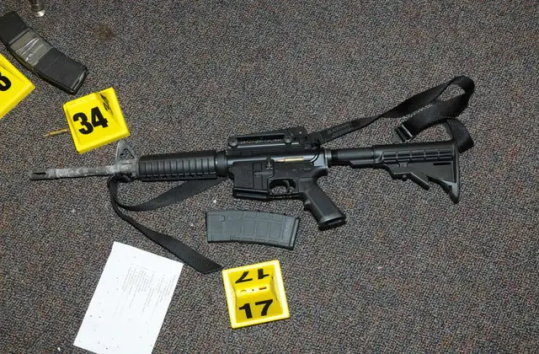

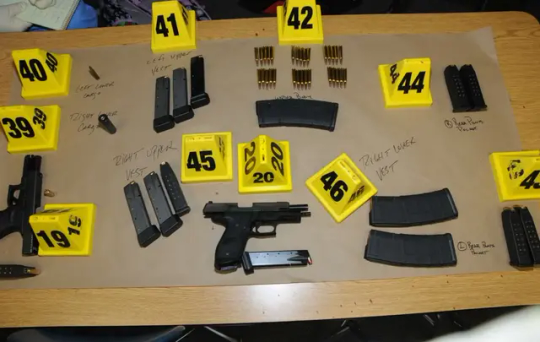

Adam lanza's guns
506 notes
·
View notes
Text
“this is completely out of touch and an insult to the intelligence of the american people!…”
2K notes
·
View notes
Text
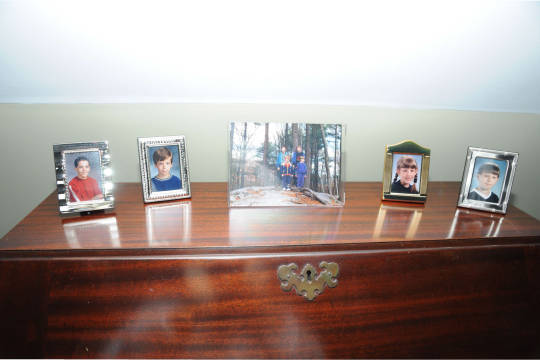






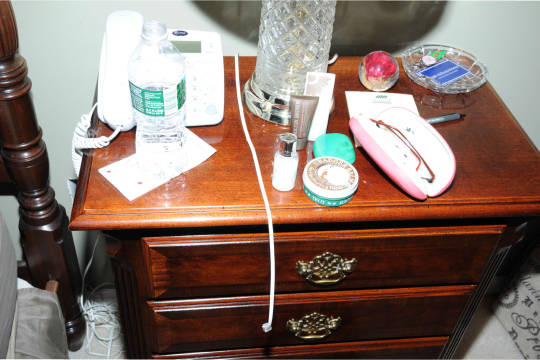
Nancy Lanza's room
291 notes
·
View notes
Text




12 years ago///14/12/12


254 notes
·
View notes
Text
#1 Fact about the Columbine massacre that you may not know
Eric's carbine had a laser sight
Eric's HiPoint 995 carbine rifle did have a laser sight... if you could call it that

It is just a guess but it appears to be a 90s model laser pointer that has been electrical taped to the barrel of his rifle.


Example of the "laser sight" ⤴︎
Eric actually had "Laser for Carbine" written on a list of things he needed to get but it was crossed off when the note was found leading us to believe he had acquired it. That note can be seen in the next image ⤵

Eric understood how laser sights work on rifles and would have known that a home made one like this would only provide a very general direction in which the bullet was heading.

⋆⁺₊⋆ ━━━━⊱༒︎ • ༒︎⊰━━━━ ⋆⁺₊⋆
1K notes
·
View notes
Text
columbine cafeteria



library of columbine

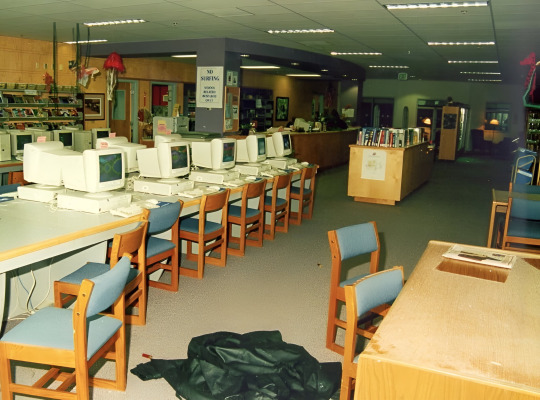


outside of columbine



(i have a few more but they won’t fit)
#tc community#tcc tumblr#tccblr#tcc columbine#eric and dylan#mass shooting#educational purposes#crime scene#nsfw
282 notes
·
View notes
Text

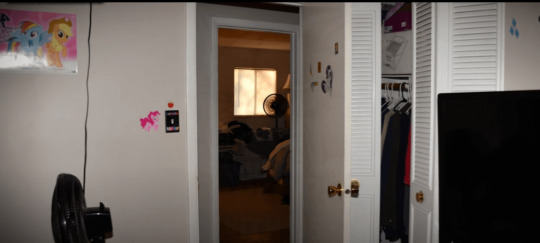
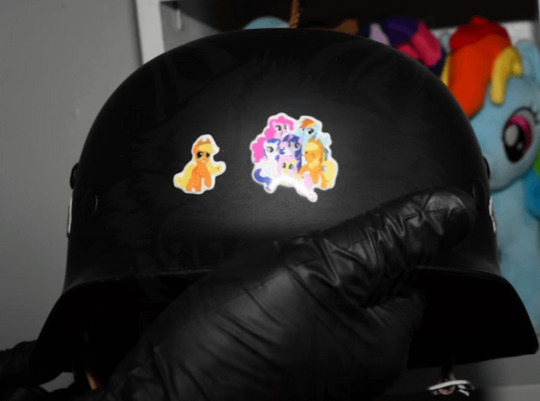

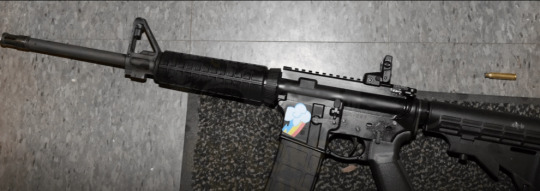
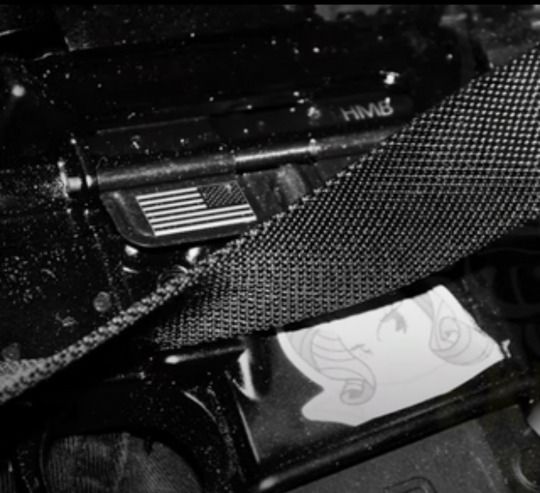
FedEx shooting Brandon Scott Holes bedroom and gear
560 notes
·
View notes